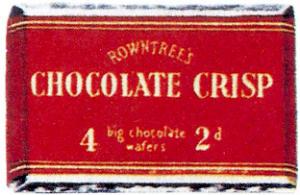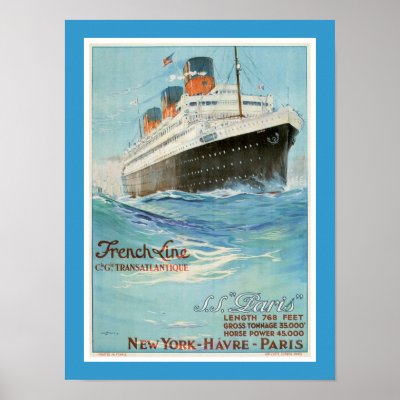
The official blog for the 2010 Ohio University production of "Holiday" by Philip Barry.
Wednesday, September 29, 2010
Etiquette in Society, in Business, in Politics and at Home by Emily Post

Thursday, September 23, 2010
SNL Giraffes Video!!!!
Giraffes!!!!!!!!!!!!!!!!!!!!!!!!!!!!!!
http://www.hulu.com/watch/42614/saturday-night-live-giraffes
Social Register
Here is the link to the article Dennis mentioned in table work yesterday about the Social Register:
SS Normandie Pictures

The French Line's Normandie is one of the relatively few legitimate contenders for the title "Greatest Liner Ever". She was a ship of superlatives: the largest ship in the world for five years, more than 20,000 tons larger than White Star's Majestic; the first liner to exceed 1000 feet in length; the first liner to exceed 60,000 tons (and 70,000 and 80,000, for that matter); the largest turbo-electric powered liner; and the first to make a 30 knot eastbound Atlantic crossing. All told, Normandie earned the Blue Riband for five record-breaking crossings; twice westbound and three times eastbound, including both legs of her maiden voyage. And yet, all these technical qualities are only part of Normandie's greatness; her design and decor were equally innovative, distinctive and luxurious. All of these factors contributed to her being described as "the ultimate ocean liner---definitely of the 1930s and possibly of the century"
(Braynard and Miller's Fifty Famous Liners.)

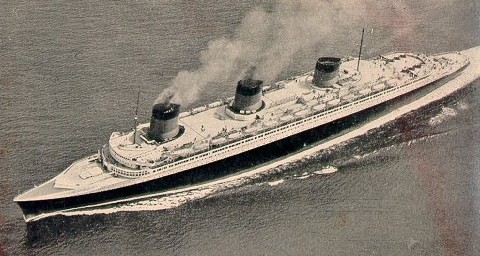

SS Normandie Interior

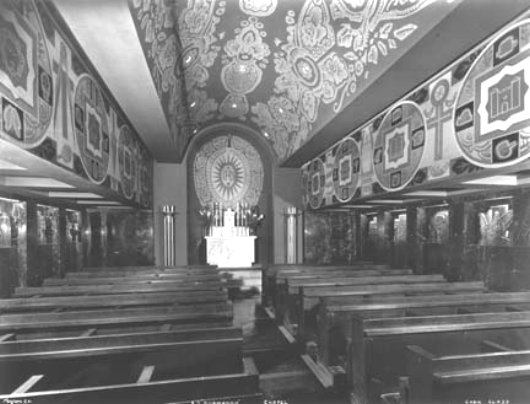

The luxurious interiors were designed in Art Deco and Streamline Moderne style. Many sculptures and wall paintings made allusions to Normandy, the province of France for which Normandie was named. Drawings and photographs show a series of vast public rooms of great elegance. Normandie's voluminous interior spaces were made possible by having the funnel intakes split to pass along the sides of the ship, rather than straight upward. French architect Roger-Henri Expert was in charge of the overall decorative scheme.
Most of the public space was devoted to first-class passengers, including the dining room, first-class lounge, grille room, first class swimming pool, theatre and winter garden. The first class swimming pool featured staggered depths, with a shallow training beach for children.
The interiors were filled with grand perspectives, spectacular entryways, and long, wide staircases. First-class suites were given unique designs by select designers. The most luxurious accommodations were the Deauville and Trouville apartments, featuring dining rooms, baby grand pianos, multiple bedrooms, and private decks. The first class dining hall was the largest room afloat. At three hundred and five feet (93 m) it was longer than the Hall of Mirrors at Versailles stood 46 feet (14 m) wide, and towered 28 feet (8.5 m) high. Passengers entered through 20-foot (6.1 m) tall doors adorned with bronze medallions by artist Raymond Subes. The room could seat 700 at 157 tables,with Normandie serving as a floating promotion for the most sophisricared French cuisine of the period. As no natural light could enter it was illuminated by 12 tall pillars of glass flanked by 38 matching columns along the walls. These, with chandeliers hung at each end of the room, earned the Normandie the nickname "Ship of Light"(similar to Paris as the '"City of Light").
A popular feature was the café grill, which would be transformed into a nightclub. Adjoining the cafe grill was the first class smoking room, which was paneled in large murals depicting ancient Egyptian life. Normandie also had indoor and outdoor pools, a chapel, and a theatre which could double as a stage and cinema.
SS Normandie Statistics
Owners | Compagnie Générale Transatlantique |
| Builders | Penhoët Shipyards, Saint Nazaire, France |
| Launched | October 29, 1932 |
| Maiden voyage | May 29, 1935 Le Havre - New York |
| Broken up | October 3, 1946 to October 6, 1947 |
| Length overall | 1029 feet |
| Length between perpendiculars | 962 feet |
| Beam | 118 feet |
| Height from keel to top of first funnel | 184 feet |
| Average loaded draft | 37 feet |
| Gross registered tonnage | 79,280 (83,423 after 1936) |
| Number of decks | 12 |
| Boilers | 29 (plus 4 auxiliary) |
| Engines | Four Turbo-Electric, total 160,000 hp. |
| Cruising speed | 29 knots. |
| Top speed | 32.2 knots. |
| 1st class passengers | 848 |
| 2nd class passengers | 670 |
| 3rd class passengers | 54 |
| Officers and crew | 1345 |
Wednesday, September 22, 2010
The Fatal Wedding/Southern Roses
Gussie Davis
Southern Roses (Act II, pg. 53)
Johann Strauss II
Meaning of character's names
First names:
Julia-French for soft-haired, youthful
Linda-Spanish for "pretty one"/English for "Linden tree"
Edward-English for "wealthy guardian"
Ned-Short for Edward. See above.
Seton-Old English for "sea settlement"
Laura-English for "laurel-crowned"
Susan-Hebrew for "lily"
Nick-Short for Nicholas or Dominik. Meaning "victorious people"
Charles-German for "manly" or "farmer"
Delia-Could be short for Cordelia. Welsh for "dark"
Henry-German for "ruler of the home"
Last names:
Cram-German for "peddler"
Potter-English for "maker of pots"
Religion and Church in the Great Depression

For many in the 1930s, religion fueled their emotions and supported their arguments. For others, religion offered the solace of continuity and a sense of contact with something transcending the problems of this world, and many rejected mixing politics and religion.
The economic collapse had a direct effect on religious groups. Regular attendance at religious services dropped, perhaps because the recently poor were embarrassed by their new status. Only a third of the population reported attending services once a week.
While the Seton's do seem to be somewhat religious, particularly Edward, they would have also found an excuse to attend church so that they may flaunt their wealth. They could easily afford to wear their "Sunday Best" and give money to the church, unlike most Americans. America was also prominently white Protestant (we can assume that the Seton's are as well) and most thought that they were the most authentic Americans and exercised their cultural dominance.
Maxfield Parrish's Work




Arabian Nights (illustrations from 1909 and 1923), Myths and Fairy Tales, Poems of Childhood (illustrations from 1904), Nursery Rhymes, The Ring of Nibelung (illustrations from 1898) and Landscapes.
Selected Books Illustrated
- Baum, L. Frank. Mother Goose in Prose. Chicago: Way & Williams, 1897.
- Lee, Albert. The Knave of Hearts: A Fourth of July Comedietta. New York: Russel, 1897.
- Grahame, Kenneth. The Golden Age. London: John Lane at Bodley Head, 1899.
- Grahame, Kenneth. Dream Days. London: John Lane at Bodley Head, 1899.
- Field, Eugene. Poems of Childhood. New York: Scribners, 1904.
- Wharton, Edith. Italian Villas and Their Gardens. New York: Century, 1904.
- Wiggin, Kate Douglas and Nora A. Smith, eds. The Arabian Nights, Their Best-Known Tales. New York: Scribners, 1909.
- Hawthorne, Nathaniel. A Wonder Book and Tanglewood Tales for Girls and Boys. New York: Duffield, 1910.
- Hawthorne, Hildegrade. Lure of the Garden. New York: Century, 1910.
- Saunders, Louise. The Knave of Hearts. New York: Scribners, 1925.
- Stein, Ealeen. Troubador Tales. Indianapolis: Bobbs-Merrill, 1929.
Periodicals Illustrated
- Harper’s Weekly, 1895-1906.
- Ladies’ Home Journal, 1896-1915, 1920, 1930-1931.
- Scribner’s Magazine, 1897-1905.
- Century, 1898-1917.
- Collier’s, 1904-1913, 1936.
To see more go to:
http://maxfieldparrish.info/
http://parrish.artpassions.net/
Maxfield Parrish Biography
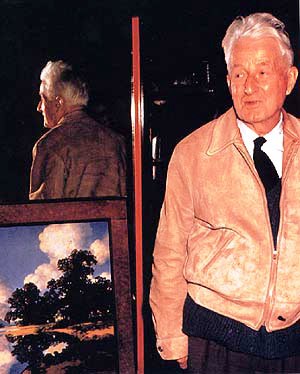
In 1900, Parrish contracted tuberculosis, and then suffered a nervous breakdown. Around that time, he switched from illustrations to oil painting. Parrish blue was named in acknowledgment. His oil paintings became very popular, with their brilliant colors and magical luminosity, until well into the 1940s. To achieve these magical effects, he would apply numerous layers of thin, transparent oil, alternating with varnish over stretched paper, a painstaking process that achieved both high luminosity and extraordinary detail. This is called glazing.
The tuberculosis hung on and Parrish went to Arizona to convalesce in the dry heat there. While in Arizona, he was commissioned to do a series of landscapes. He began painting and traveling on commission and his career took off.
Parrish worked at his home in Cornish, New Hampshire, called The Oaks. The Oaks was a popular destination for guests during the summers but in the frozen New Hampshire winters, Parrish dedicated himself to his painting.
In 1905, Parrish's met Susan Lewin, a 16-year old girl hired as a nanny for his son Dillwyn. Her image appears often in paintings from this time through the 1920s. Over time, Susan became Parrish's assistant, model for his paintings, and eventually his lover. His wife, Lydia, and Maxfield grew increasingly estranged and she left him in 1911. Susan stayed with Maxfield for another 50 years.
From the 1930s until 1960, when he stopped painting, Maxfield Parrish refocused his attention on the world around him, producing a series of calendar landscapes. Yet even these retain the magical, window-to-the-otherworld quality that permeates all of his work.
Parrish died at 95 in 1966, at a time when his work was enjoying a renaissance of interest.
Temperatures at Lake Placid and NYC
December 21/-4
(It did reach -30 at somepoint during the month.
Hopefully it wasn't when Julia and Johnny were there!)
New York City
Average temperature in 1935:
Julia is right! It was twenty degrees colder in Placid!
Fun Fact of the Day
Dating in the 20th century
The word dating entered the American language during the 1910s. Dating was connected to the emergence of new kinds of commercial amusements, such as amusement parks, ice cream parlors, and especially the movies, and to the rise of the automobile. As early as the 1890s, young people in rapidly growing cities had begun to spend more of their leisure time in commercial settings, such as amusement parks, dance halls, and nickelodeons. By the 1910s, adolescent boys, in growing numbers, had begun to ask girls out. Starting in the 1920s, a date usually involved one or two couples going out together to a movie, a dance, a soda shop, or a roadside restaurant. In places outside of large cities, this increasingly relied on access to an automobile and became dependent on the outlay of significant amounts of cash to ensure that the treat for the afternoon or evening was acceptable to the dating partner. Commercial considerations were thus embedded into the very structure of the dating relationship, which required that the male treat the female to a good time. Women too were required to expend money on their appearance, wearing fashionable clothes and stylish hairdos, and relying on beauty treatments and up-to-date cosmetics.
Dating, unlike calling, was not about finding a mate. It was about having fun with a member of the opposite sex. At a time when gender relations were particularly distant, dating provided a way to bridge the gap. Also unlike calling, which was monitored by adults, the dating system was overseen by young people themselves. The peer group set the rules for dating. Through gossip and teasing, it helped determine who one could go out with and how much sexual intimacy was allowed.
Dating was highly gendered. A boy was expected to ask a girl out, pay for the date, and provide the transportation. In return, he expected physical intimacy, In most cases, these activities fell short of intercourse, involving instead an elaborate pattern of sexual play that included hand-holding, kissing, petting, and fondling. It was well understood that within this evolving pattern women would define the limits of acceptable behavior, while men would try to push those boundaries as far as possible. Most studies of the 1920s and 1930s show that among those whose dating had become exclusive, especially those who were engaged to marry, intercourse would become an occasional or regular part of the dating relationship for about half of these couples. This was usually rationalized as a legitimate expression of the commitment to a long-lasting loving relationship oriented to marriage.
During the 1920s and 1930s, a young woman’s popularity was measured by how frequently she was asked out on dates. It was not uncommon for urban middle-class young women to go out on dates three or more times a week. Sociologists later discovered that those young women who dated the most were the least likely to pursue an advanced education
A new vocabulary gradually appeared, including such words as crush, boyfriend, girlfriend, and going steady. An especially important word was “bashful,” to describe boys who were reluctant to date. By the 1930s, dating had become highly ritualized. Informal dating was followed by going steady (a new phrase during the Depression decade), getting pinned, getting engaged and then getting married.
Sources:
http://www.digitalhistory.uh.edu/do_history/courtship/flapper.html
http://www.faqs.org/childhood/Co-Fa/Dating.html
Education in the early 1900s



The public schools, on the other hand, were free and mostly attended by the kids who were not rich. Boys and girls were at the same school. There was a class for each grade level with about 20 to 30 kids in each class. Most of the subjects were the same, but the teachers were harder on the children in public schools. If the kids did something wrong, the teachers would hit them with paddles or rulers, or box their ears. They also had lessons in archery and tennis, got to play basketball and learn how to swim.
In 1910, 79% of children were enrolled in American schools. In 1905 the average school term lasted 151 days, during which the average student attended 105 days. By 1918 all states had passed laws requiring children to attend at least elementary school. Most kids never finished the 8th grade. They went to work in factories, farms and coalmines to help their families. Some went to high school and a few went to college. At the beginning of the century about 2 percent of Americans from the ages of 18 to 24 were enrolled in a college. In those days, very few women went to college (about 1/3 of the pop. of college students) , especially since in America, there were only 11 colleges for women and it was difficult to accepted. Sometimes, if there was room in men's colleges, they would be accepted, but usually only in the summer when the men were working.
History of Women in America:
http://www.wic.org/misc/history.htm
The History of Education in America:
http://www.chesapeake.edu/Library/EDU_101/eduhist_20thC.asp
Tuesday, September 21, 2010
Newspapers, Periodicals and Magazines
http://www.bklyn-genealogy-info.com/Directory/1930.Papers.html
Domestic Work and Workers

***************
As discussed during rehearsal, the maids and other servants in the Seton household would have lived with them and been on call 24/7. Also, I think that it's important to point out that the salary of the Seton servants was probably much higher as well. Considering that most people we struggling to find a job in this time period and you have a set and moderately well paying domestic job, how does this affect your relationship with your employers? Are you more willing to do things for them and put up with the excessive things they ask you to do? Just something to think about.
Additional Paris Liner pictures
Paris Liner

Two years later, on June 5, 1921, the Paris was completed. She emerged from the shipyard as the largest vessel ever built in France. Now that the ship was completely fitted, the press could catch an eye on what the French Line had meant in 1913, when they talked about the Paris’ interiors. e ship had something of a magic touch, with every possible kind of interiors. You could choose to travel in the standard conservative palace-like cabins, but the ship also featured Art Nouveau and hints of the Art Deco that the Ile de France would boast six years later. The luxury of the ship was something no other liner could claim to have. For starters, most first class staterooms had square windows rather than the usual round portholes. In your cabin you were able to have a private telephone, which was extremely rare on board a ship. Your valet could on the Paris be easy to call for in his adjacent room, rather than in a cabin in the second class, uncomfortably far away. Added to this the Paris, along with the other French liners, was known for her superb food.
The Paris
 |
| The kind of luxury available in the Paris' staterooms were astonishing for her time. Note the telephone between the two beds - a novelty introduced by the French. |
In April, 1929, the Paris had ran aground on the Brooklyn shore, but that did not damage the ship as bad as the fire that broke out on board the ship when she was at Le Havre four months later. The ship’s passenger areas were completely devastated by the blaze’s smoke, and by the great amount of water sprayed by the fire brigade. It took almost half a year to repair the Paris. When she returned she had had her passenger accommodation changed from 2,132 to 1,934. But this occurrence was merely a taste of what would follow.
 |
| The Paris burning at the docks in Le Havre. |
The Paris-Specifications
Length: 764 feet
Beam: 85 feet
Weight: 34, 569 tons
Engine: Steam engine powering four propellers
Speed: 22 knots
Passengers: 2,132 people
http://www.thegreatoceanliners.com/paris.html
Sunday, September 19, 2010
Eleanor Roosevelt and Women's Rights

America in the 1930s
The 1930s: In print, on film and on the air:
The Great Depression:
http://www.tms.riverview.wednet.edu/lrc/great%20depression.htm
Documenting America: Photographs from 1935-1945
http://lcweb2.loc.gov/ammem/fsowhome.html
Mickey Mouse
Last black and white Mickey cartoon:
One of the first color Mickey cartoons:
All videos are circa 1935
FDR's Fireside Chats
Second Fireside Chat
Welcome!
I will be posting links, videos, pictures and additional information on this blog throughout the course of rehearsals. Anything that we might discuss in table work that I cannot physically print off and bring to rehearsals will be posted here as well. Make sure you check back here regularly, as I will only be in rehearsals for the first few weeks and every so often after that.
I am hoping that this blog will continue to help the entire production team learn about the time period, events, and people of the 1930s and remind you all of the context in which this play is set. The more we all know, the more we can discuss how the characters and their interactions with each other are affected by the world around them!
So, enjoy and remember to use this blog to your advantage! If you have a particular interest in certain topics that were mentioned in the sourcebook or during rehearsal that you would like more information about, please feel free to contact me here or by email (tb994606@ohio.edu) and I will see what I can find!
Thanks,
Taylor


